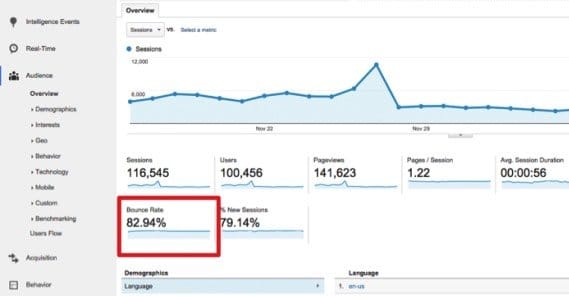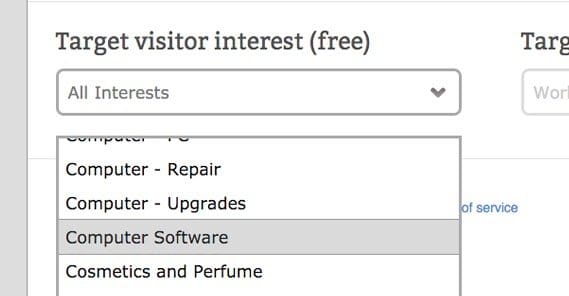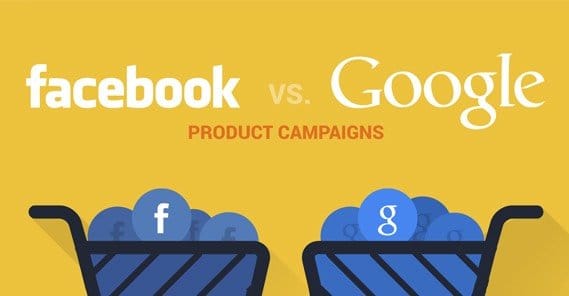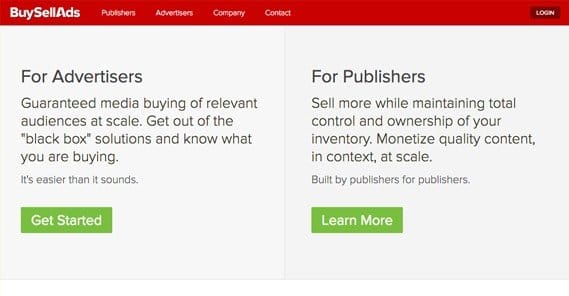How to Get Targeted Website Traffic from Any Country

If you want traffic from a specific country, you have two options; you can buy it, or you can work to get it organically.
These are the only options available to you if you’re looking for untargeted traffic too, of course. You either get it with money or you get it without. It’s just that with geographically targeted traffic, you have more limitations and have to take special steps to get it organically. Paid traffic works about the same, so I’ll cover that first.
Buying Traffic
The first option is just buying traffic from a reputable seller. A good seller is probably just sending you traffic from an ad network you can’t normally join, using connections they’ve built up within the industry. They’ll be able to specify geographic targeting for their ads, running ads to your sites on sites frequented by people of your chosen country. This is, of course, easier for some countries than for others.
With this method, you really have to watch out for the quality of the traffic you’re getting. Low quality traffic sellers don’t run ads, that’s too much work. Instead, they have a fleet of bots – either software running on some computers they own, or access to a bunch of compromised computers in a botnet – and they will direct those bots to come to you. It’s really quite easy to spoof a user agent, including location, from a traffic bot. It’s even easier to find a proxy server in the country you want and route traffic through it, so it looks like the traffic you get comes from that country, though all from the same IP range.
No matter who you’re buying your traffic from, be it Facebook or Fiverr or anything in between, always start off slow. Spend a few bucks and buy a little bit of traffic. You’re looking to get just enough to test and measure how well the traffic performs. Think about it this way. If it’s good traffic, you can decide to scale up your purchase and get more of it. If it’s bad traffic and you spend a lot, you’re wasting your investment.
Bad traffic can do more than just waste the money you spend on it. In extreme circumstances, it can make you a target for negative SEO or a DDoS. In less extreme circumstances, it can be detected by your ad network or affiliate provider, who may block you from their program. AdSense is fickle about this, as are many of the top-tier CPA networks. You don’t want to have your monetization cut out from under you.
You also need to analyze your situation and determine if the act of buying traffic can be beneficial to you. Some industries simply don’t have a broad enough appeal to make any profits from purchased traffic. The vast majority of users coming from geotargeted traffic are casual users. If you can appeal to them, great. If you have more specific targeting needs, though, you’re going to find disappointing returns.
If the traffic seller allows you to, specify additional targeting on top of geotargeting. For example, if you’re a B2B company, you want business traffic, not random Facebook traffic. Specify the industry and professional level, if you can.
As for geo-targeting itself, I’m assuming you know why you want to target a specific country. I’m also assuming you’re targeting a non-English country, because default web search traffic tends to come from the big English-dominant countries like the USA, Canada, Britain, and Australia. Sure, you can get traffic from India a heck of a lot cheaper, but are you sure you want to? If you’re getting traffic that’s targeted from a country you can’t sell in, what’s the point? The traffic isn’t the goal; the purchases they make are the goal. If you’re targeting traffic to make it cheaper, you need to know you’re still capable of making money.
You also need to make sure you’re not locking yourself into a contract when you make your first purchase. Good traffic sellers are willing to sell you a little bit of traffic and let you make your decision about buying more later. Shady traffic sellers are a lot more likely to try to rope you into an ongoing contract with stiff fees for cancellation, because they know you’re not going to be satisfied and they want to get as much out of you as they can before you suck it up and cancel.
If possible, talk to the seller about what format is attracting people to your site. Bot sellers won’t want to tell you, or will tell you about their proprietary system. Ad resellers, however, will explain to you the sorts of ads they’re running. Text ads are good. Pop-ups and pop-unders are not as good, because they tend to associate your site with the wrong crowds. Google can even detect when you’re being advertised through a pop-up and may penalize you a bit. Banner ads and domain redirects are generally fine, though not necessarily top tier.
Buying Targeted Ads
Now, you can skip the middleman and buy ads on your own. This is very easy to do; the services that sell ads have a vested interest in getting you to buy them, after all. The more ads you buy, the more they can earn.
You can buy ads directly from the big names, like with Google AdWords or with Facebook ads. You can also go with some of the third party networks, some of which you may not have heard of before. I recommend starting with the two above, but the choice is yours.
If you do decide to go with a third party ad network, here are some tips for choosing one:
- Look into the publishers that are part of the ad network. It doesn’t do your pool filter business any good to be advertising on a network where 95% of the publishers are in the online dating niche. Often times a good network will advertise their publisher demographics, and will be able to give you a good idea of what industries do best with their network.
- Talk to someone to see whether or not the ad network has anti-fraud policies in place. Just like you don’t want to be buying fake bot traffic from a traffic reseller, you don’t want to be buying bot traffic from an ad network either.
- Investigate the targeting options available to you. Obviously if they don’t have geotargeting, you won’t be going with them, but that’s the lowest possible bar to clear. Ideally, they will have fairly robust interest and demographic targeting, as well as broad industry targeting.
You also want to know how much they do for you versus how much you have to manage on your own. Some networks have pretty robust dashboards with a lot of control options, while others are just hubs for basic analytics. You want one that suits your needs. I’m not in a position to tell you what you want and what you don’t, so just make that decision when you come to it.
In addition to Facebook and Google AdWords, here are some of the networks you might consider using.
BuySellAds is one of the more self-serve networks for publishers. It’s more of a marketplace than an ad network, and they have a huge number of publishers available to you. They’re used by a lot of big names, including PBS and NPR.
7Search is an old network that specializes in narrow niches, with a low minimum deposit. Check out the niches they specialize in and see if they’re compatible with what you want to get out of your ads.
EZanga is a network that works with niches that aren’t available with a lot of different ad networks. If you find your industry is frequently restricted from advertising, use this network.
Infolinks is one of the largest purely text-based link advertisers out there. They also work with a unique contextual advertising model which helps put your ads in places they make sense to be. If you browse the web and have ever seen a text link ad, you’ve probably seen an Infolinks ad.
Matomy works with both display ads and with various forms of CPA advertising. If you’re interested in setting up lead generation through an affiliate-style model, this is one network you can go through to set it all up.
There are, of course, dozens of others. You have plenty of choice and plenty of time in which to make a choice. Investigate the most promising options, run some low-cost tests, and figure out how well traffic from each prospect performs.
Encouraging Organic Targeting
So, what if you don’t want to pay to get your geographically targeted traffic? Well, you can still get it, but you’re going to have a harder time doing so. Paid traffic has a lot of targeting options because you’re paying for a product. The provider of that product wants to give you the best results they can, so you keep buying more. Hence, robust targeting options.
With organic traffic, no one is in control of providing you with that product. The people reaching your site are doing it of their own volition. If you want traffic from a specific country, you need to take action to put your content in front of users of that country, and promote it through search engines that work best in that country.
One big example of this is Facebook. Facebook is excellent for an English audience, but in some areas of the world, it’s just not very useful. If you’re looking to advertise in China, for example, you’ll want to establish a presence on one of their top-tier social networks. Facebook will fall flat, but RenRen or 51.com are both better options. Russians use Facebook, but they also love VK.
So, to refer social traffic to your site, using the right network will get you a huge head start. You can also take actions on the sites you use.
For example, with Facebook, you have targeting options for organic posting just like you do with ads. Organic targeting for posts has been around for four years at this point, but you need to turn it on. This gives you almost all of the same targeting options you get for Facebook ads, so you’re going to want to make heavy use of the geographic targeting. This will give your posts preferential visibility to followers in those areas.
As for your website, there are ways you can work to make it more visible in your target country. Again, it’s harder for English countries and sites than it is for foreign language sites.
The first and most obvious means of geotargeting a site is to use a geotargeted URL. If your site is www.example.com and you want to reach a French audience, you should register www.example.fr instead. You can run two sites as mirrors with translated content, or you can just redirect the .com to the .fr site. The choice there is yours, depending on if an English audience is valuable to you.
If you can’t establish a new domain name, the next biggest geotargeting signal for organic search tends to be language. If you want to reach a primarily French audience, write your content in French. It won’t be picked up by the main Google.com site, but Google.fr will be more than happy to index and promote you. The same goes for other languages; write in the language of the area you want to reach.
You can also supply contextual information for geographic residents. This is primarily for local businesses, but; include address information. Google loves putting local results in the search results for local users, so having your address in place means you’ll show up in supplementary locations, like the local carousel. In addition to language, details like address, phone number, zip code, and currency all contribute to geographic preference in search results.
If you want to go all-in with several geographic variants, you can do so with dynamic IP address detection and redirects. These are made at the server level – talk to your developer or server admin about how to do it on their architecture – and will redirect users from certain IP ranges to different variations of your site. By using dynamic generation, you can even show it all on the same homepage. Alternatively, you can use subdomains or subfolders, like www.fr.example.com and www.example.com/fr/.
Google also provides a way to choose your preference, but it’s of limited utility. It only works when you have a generic TLD, like .com or .org, not a country code or geographically relevant TLD. Additionally, the setting is only a preference, it’s not a rule. Google won’t necessarily restrict you from English queries or queries outside of your chosen preference, but neither will they by default promote you in the country you choose.
To set this, you need to log into your property in Google Webmaster Tools. Go to the Country tab and click on the Geographic Target box. Check it and then select your country of intent from the drop-down box. You can change it later, but changing it too often will indicate to Google that you’re not serious about specifying a country of interest, and they’ll generally ignore your requests and go by context and interest instead.

 ContentPowered.com
ContentPowered.com









